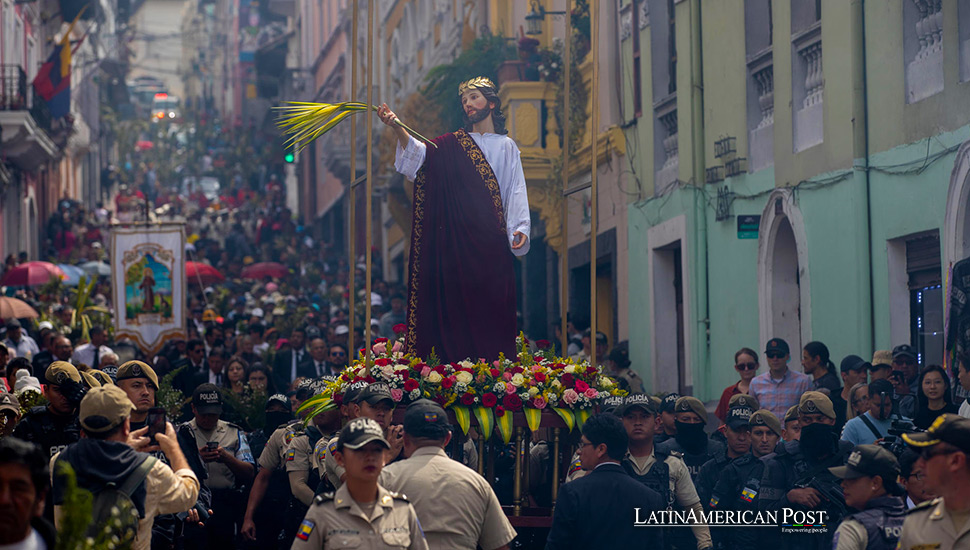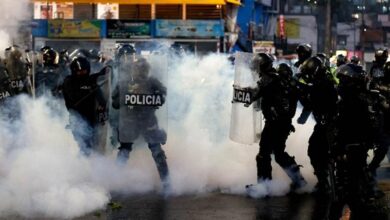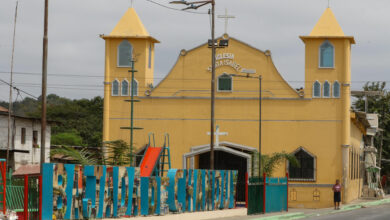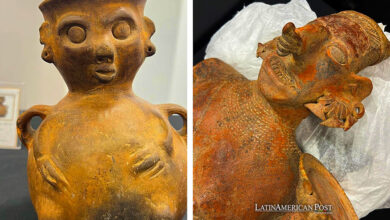Ecuador’s “Quito Holy Week”: A Cultural and Spiritual Nexus

Quito’s Holy Week, a vibrant manifestation of faith and culture, attracts thousands to Ecuador’s capital, showcasing a rich tapestry of religious ceremonies, cultural expressions, and unique gastronomy set against a UNESCO heritage backdrop.
Exploring Quito’s Holy Week Tradition
In the heart of South America, Quito, Ecuador’s capital, comes alive during Holy Week, an event that stands as a profound symbol of Latin American spirituality and cultural heritage. This week-long observance, steeped in tradition and enthusiasm, draws visitors from across the continent and offers a window into the region’s deep religious roots and communal identity.
Holy Week in Quito is a spectacular affair, featuring over a hundred activities against the city’s historic center, a UNESCO World Cultural Heritage site since 1978. The week’s events begin with the Palm Sunday procession and outdoor mass, drawing thousands of faithful in a solemn assembly of devotion.
Quito’s Holy Week is unique for maintaining centuries-old traditions like the ‘Arrastre de Caudas’ ceremony, a practice dating back to the 16th century from Spain and preserved in Quito, while others, like Sevilla and Lima, have ceased it. This ceremony, held on Holy Wednesday, sees the Archbishop and his canons processioning in the cathedral, bearing long black cloaks symbolizing the world’s sins, a vivid embodiment of penance and reflection.
Culmination of Observances
The observance continues through Maundy Thursday with the pilgrimage to the city’s seven iconic churches, culminating in the ‘Procesión de la Luz’ (Procession of Light), and reaches its zenith on Good Friday with the ‘Jesús del Gran Poder’ procession. This event mirrors the grandiose Holy Week processions of Sevilla, Spain, complete with ‘cucuruchos’ (penitents in cone-shaped hoods) and ‘verónicas’ (women in purple robes), reenacting biblical scenes with sincere piety.
Amidst these solemn observances, the ‘Procesión de los Diablos’ in La Merced parish offers a contrasting spectacle. Figures representing devils dance in the streets, symbolizing the temporary triumph of evil over the death of Christ.
Beyond the religious ceremonies, Holy Week in Quito is also a culinary showcase, particularly with the fanesca, a traditional fish soup made with twelve different grains, symbolizing the twelve apostles. This dish, central to the Holy Week gastronomy, is celebrated in the ‘Fanesca Sostenible, del Campo a la Mesa’ festival, highlighting sustainable and traceable local produce.
Quito’s Semana Santa doesn’t exist in isolation but is part of a larger tapestry of Holy Week celebrations across Latin America. From Mexico to Argentina, these observances reflect a spectrum of local traditions and historical influences, portraying a shared heritage of Spanish colonialism, indigenous cultures, and Christian faith. Each country and city adds nuances to the Holy Week narrative, yet all share common themes of spiritual introspection, communal participation, and cultural preservation.
In Mexico, for instance, Semana Santa combines indigenous practices with Catholic rituals, creating a unique blend of solemnity and vibrant pageantry. In Guatemala, the elaborate alfombras (carpet) processions on the cobblestone streets of Antigua offer a visually stunning spectacle. In Peru, particularly in Ayacucho, the week is marked by processions, folk music, and vibrant displays of faith and tradition.
The celebration of Holy Week in Latin America, exemplified by Quito’s elaborate ceremonies, underscores the profound role of religion in shaping the region’s cultural identity. It’s a time when historical, spiritual, and communal threads intertwine, offering a rich tapestry of experiences that resonate deeply with locals and visitors alike.
These observances are not mere religious formalities but are deeply embedded in the region’s social and cultural fabric, reflecting a history of conquest, syncretism, and resistance. They offer a glimpse into Latin America’s soul, where faith, history, and community converge in a vibrant celebration of life, death, and rebirth.
A Microcosm of Latin America’s Spiritual Landscape
Quito’s Holy Week, with its distinctive blend of solemnity, celebration, and cultural heritage, thus serves as a microcosm of Latin America’s broader spiritual landscape. It highlights how these traditions, while deeply rooted in the past, continue to evolve and resonate in the region’s contemporary socio-cultural context.
As the city’s plazas, streets, and sacred spaces are filled with the faithful and the curious, Holy Week in Quito becomes more than a religious event; it transforms into a dynamic stage where cultural heritage and spiritual devotion unfold in a spectacle that captivates the senses and stirs the soul.
Quito’s Holy Week is not just an event of local importance but a cultural phenomenon that reflects the broader narrative of Latin American spirituality and heritage. It embodies the region’s complex history, diverse artistic expressions, and the enduring power of faith and community. As Latin America continues to navigate the crossroads of tradition and modernity, the enduring legacy of Semana Santa in Quito stands as a testament to the region’s rich spiritual and cultural tapestry. This week of reverence and celebration encapsulates the essence of Latin American identity, offering insights into the collective spirit that defines and unites its diverse peoples.
Also read: Ecuador’s Flower Industry Blooms Amidst Challenges
Through the lens of Quito’s Holy Week, we witness the vibrant interplay of history, faith, and culture that characterizes Latin America. It’s a time when the sacred and the secular, the ancient and the contemporary, merge in a harmonious expression of communal identity and spiritual introspection. In this way, Holy Week in Quito transcends its religious origins, becoming a beacon of cultural heritage and a focal point for understanding the broader societal values and historical currents that shape Latin America.
As the faithful gather in Quito’s historic streets, echoing the rituals and prayers of generations past, they reaffirm the enduring relevance of these traditions in shaping the region’s collective consciousness. Holy Week, with its rituals, music, gastronomy, and communal gatherings, continues to be a vital thread in the fabric of Latin American society, weaving together the past and present in a vibrant mosaic of faith and cultural identity.





